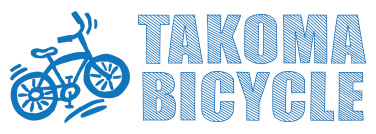
Three Shifting Tips for Rookies
Knowing when and how to shift is one of the key factors in your cycling efficiency. The most typical bike has 21 speeds. Consequently, the average rider has enough gears to maintain a cadence from 8-40 miles per hour. If you shift effectively, you will capitalize on your momentum so that you can generate power as smoothly and efficiently as possible. Want to rob yourself of momentum? Simply wait too long to shift gears. Read on for some shifting tips for rookie cyclists to get you riding and shifting efficiently.
Tip #1: Know the Numbers
On the handlebars of a typical bike there will be 21 speeds to choose from - but not numbers 1 to 21. On the left side of the handlebars is a lever with the numbers 1 to 3, while on the right side is a lever with numbers 1 to 7. The left hand lever controls the three chainrings on your front derailleur, and provides drastic change to how easy or hard it is to pedal. The right hand lever controls the chainrings on your back derailleur and should be thought of as the fine tuning mechanism for how hard or easy it is to pedal.
Tip #2: Know the Right Combos
When you're climbing a hill (so working harder) you are going to want be in a lower gear. Consequently, you will usually be selecting a 1 from the left hand lever, and a 1 to 4 on the right hand lever. If you're riding downhill and pedaling feels way too easy, you will want to be on the opposite end of the spectrum. Choose the 3 on the left, and anywhere from a 4 to a 7 on the right. This will help you go even faster. Flat roads are usually the space to use a 2 on the left - and then you can fine tune with the right based on what feels like the appropriate challenge for a good cadence.
Tip #3: Shift often and Early
It is simply not possible to shift too often - to cycle as efficiently as possible you will need to be constantly adjusting your shifting to the changing terrain. Working too hard or not working hard enough can both negatively effect your efficiency. In addition, it's important to anticipate the road to come and to ease into shifting gears. As soon as you start to hit a hill, start shifting - don't wait until you lose momentum. However, you do not want to jump gears too fast - for example, from a 3 to a 1 - because that may cause your chain to slip off the bike.
Information found on active.com.


